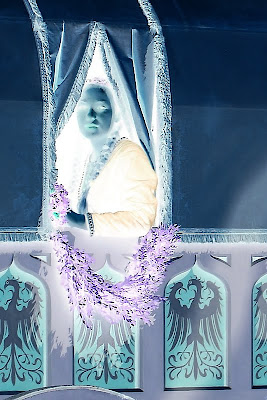Today we’re going to talk a little bit about the histogram and the characteristic curve portion. We’re going to see how every camera, film, and sensor has a different characteristic curve and how adjustments we make can change that. We’re also going to see those changes on the histogram.
First, we need to define what a histogram is. Simply stated, your histogram is a graphic representation of the range of levels within your image. The higher the graph, the more of that exposure level is present within your image. If you notice, with Canon’s DPP, it’s scaled from about –10 to +4. The starting and ending points vary between different models. The curve you see highlighted is what is generally referred to the characteristic curve, and is dependant on the camera model and sensor. This is analogous with a film’s characteristic curves, and once we see how our adjustments impact it, we can learn to judge our images and exposures.

The characteristic curve for my 7D in an unedited image

Here is the same image, after crushing levels some. Note the minor differences in the curves. Everything past the threshold of the toe will be pure black.
Next, we’re going to learn the basic terms when referring to the curve. At the bottom left, you can see the curve has tapered and become elongated. It loses its vertical travel and starts fading into a horizontal line at about –6. That area is referred to as the “toe,” and runs from –6 to about –2.5. At the upper right, something similar has happened, that area is referred to as the “shoulder,” and runs from about +1.5 to +4. The area in between is the straight-line portion. –6 on the curve is the “threshold” and at about +3 we hit “maximum density.”
The toe area represents the “density” in the negative shadow areas. The greater the density, the more detail can be brought out in your shadows. At maximum density, no further increase can be visually detected in the brightness at those levels. When we are at the threshold and maximum density, our shadows and highlights are clipped or blocked, and there is absolutely no detail in these areas. These equate to about zone 0 for your shadows and zone 10 for your highlights. These zones are slightly off some with digital due to restraints of monitors and printers. We look to get our images from blackest at zone 1 to 2 and whitest at about 8 to 9. This gives us our limitations within which our exposures must be made.
Using the example of my curve, we can see that zone 2 to zone 8, or –3 to +3 are capable of being exposed and retaining detail. Below 2 and above 8 we start to see clipping and blocking creep into the image. This equates to 3 stops under and 3 over middle gray, or what our meter is telling us to set our exposure for.
Understanding these things gives us the tools to adjust our images in a manner consistent with our vision and measurements. When we crush in our curves, as discussed in a prior post, we change our characteristic curve. As you can see from the image showing the levels we adjusted to, our toe and shoulder have gotten shorter. This changes our minimum maximum densities. In effect, it darkens our darks, and whitens our whites. A sort of photographic laundry soap! You’ll also notice that the straight-line portion becomes progressively more vertical. The more vertical this section is, the more contrast in your image.
Combining all these things, we see how easy it is to change our characteristic curve for our camera and sensor, which will change our image quality and exposure. We can easily use these tools in conjunction with our metering and proper exposure to bring our images into our range of visualization.
Film and even our sensors use these curves to determine the ISO or exposure value. That’s how true film speed was determined before the advent of digital. Sensitometry
was used in conjunction with testing different exposures to get the correct speed for setting cameras up. The densities were measured and settings read that allowed a film's ISO to be determined, and therefore exposed properly. Density today doesn’t need to be measured, but knowing how film density relates to your histogram and exposure can increase your ability to visualize and expose accurately.
The next time you’re working on your RAW images, watch what happens as you adjust your exposure and crush in your curves. When you see the characteristic curve change, you’ll know why and how better to read your original and your edits. Have fun playing with it, discovering what you can do, and making your vision concrete.
Enjoy the rest of your week.
Don’t forget to post any of your images you’d like to see here at the Hohenfels Volks Facebook page. Of course, commenting on both Facebook and here is always appreciated, too! Don't forget, we're on Google+, too!










